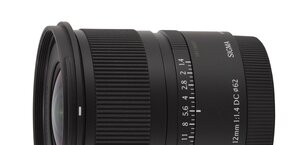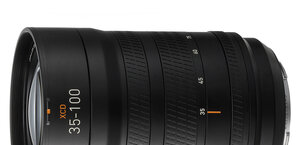Tamron 35-150 mm f/2-2.8 Di III VXD
8. Vignetting
| A7R IIIa, APS-C, JPEG, 35 mm, f/2.0 | A7R IIIa, APS-C, JPEG, 35 mm, f/2.8 |

|

|
| A7R IIIa, APS-C, JPEG, 70 mm, f/2.5 | A7R IIIa, APS-C, JPEG, 70 mm, f/2.8 |

|

|
| A7R IIIa, APS-C, JPEG, 105 mm, f/2.8 | A7R IIIa, APS-C, JPEG, 105 mm, f/4.0 |

|

|
| A7R IIIa, APS-C, JPEG, 150 mm, f/2.8 | A7R IIIa, APS-C, JPEG, 150 mm, f/4.0 |

|

|
In this case you can notice slight problems only at the longest focal length. At its maximum relative aperture brightness loss in frame corners reaches 23% (-0.77 EV) but, fortunately, it disappears almost completely on stopping down the aperture by 1 EV where it amounts to just 7% (-0.21 EV).
Please Support UsIf you enjoy our reviews and articles, and you want us to continue our work please, support our website by donating through PayPal. The funds are going to be used for paying our editorial team, renting servers, and equipping our testing studio; only that way we will be able to continue providing you interesting content for free. |
- - - - - - - - - - - - - - - - - - - - - - - - - - - - - - - - - - - - - - - - - - - - - - - -
The situation is distinctly better at the 105 mm focal length where by f/2.8 vignetting is 14% (-0.43 EV) and it decreases to just 3% (-0.09 EV) on stopping down to f/4.0.
The minimum vignetting level can be observed at 70 mm where, even at the maximum relative aperture, it would be difficult to notice it at all as it reaches just 10% (-0.31 EV) and decreases to 7% (-0.21 EV) on slight stopping down of the aperture to f/2.8.
A return to a bit higher level you notice at the 35 mm focal length but it's hardly any wonder because at that place you get a faster aperture too. By f/2.0 the light fall-off in frame corners amounts to 19% (-0.62 EV) and it decreases to an imperceptible level of 5% (-0.15 EV) on stopping down the aperture to f/2.8.
Still the performance on full frame is always a real vignetting test. Let's get a closer look at thumbnails below in order to assess the situation.
| A7R IIIa, FF, JPEG, 35 mm, f/2.0 | A7R IIIa, FF, JPEG, 35 mm, f/2.8 |

|

|
| A7R IIIa, FF, JPEG, 70 mm, f/2.5 | A7R IIIa, FF, JPEG, 70 mm, f/2.8 |

|

|
| A7R IIIa, FF, JPEG, 105 mm, f/2.8 | A7R IIIa, FF, JPEG, 105 mm, f/4.0 |

|

|
| A7R IIIa, FF, JPEG, 150 mm, f/2.8 | A7R IIIa, FF, JPEG, 150 mm, f/4.0 |

|

|
Now there are the most of problems at the shortest focal length for a change. Here at the maximum relative aperture you lose as much as 66% (-3.16 EV) of light in the corners. The vignetting level is simply huge here – it's a price you have to pay for an interesting focal range and good aperture fastness. The aberration remains bothersome even after stopping down the aperture. By f/2.8 it reaches a still distinct level of 47% (-1.84 EV) and only from f/4.0 it starts to decrease to 28% (-0.95 EV). By f/5.6 and f/8.0 our results amount to, respectively, 20% (-0.64 EV) and 15% (-0.48 EV). Further stopping down of the aperture doesn't have any measureable effect on the aberration, described here.
The lowest level of vignetting is observed at 70 mm. In this case by f/2.5 brightness loss in frame corners amounts to 44% (-1.68 EV) and it decreases additionally to 36% (-1.30 EV) on stopping down the aperture to f/2.8. All problems end by f/4.0 and f/5.6 where we got, respectively 19% (-0.60 EV) and 10% (-0.30 EV).
With the further increase of the focal length vignetting increases too. At 105 mm and f/2.8 you deal with a level of 56% (-2.40 EV), which decreases to a still significant value of 32% (-1.10 EV) on stopping down the aperture to f/4.0. By f/5.6 this aberration reaches 21% (-0.67 EV), by f/8.0 it is 14% (-0.44 EV), and by f/11.0 it decreases to 9% (-0.27 EV).
At the maximum focal length the huge vignetting level returns. By f/2.8 you deal with a value of 61% (-2.71 EV), that decreases to 39% (-1.41 EV) after changing the aperture to f/4.0. By f/5.6 this aberration reaches 26% (-0.87 EV), and by f/8.0 it drops to 20% (-0.63 EV). By f/11.0 and f/16.0 apertures we got the following results: 14% (-0.42 EV) and 8% (-0.24 EV).
| Sony A7R IIIa, 35 mm, JPEG, f/2.0 |
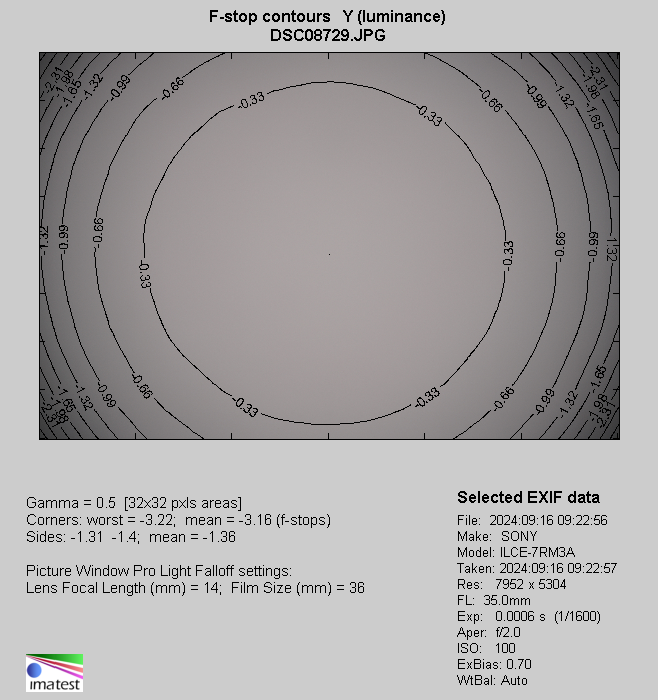 |
| Sony A7R IIIa, 70 mm, JPEG, f/2.5 |
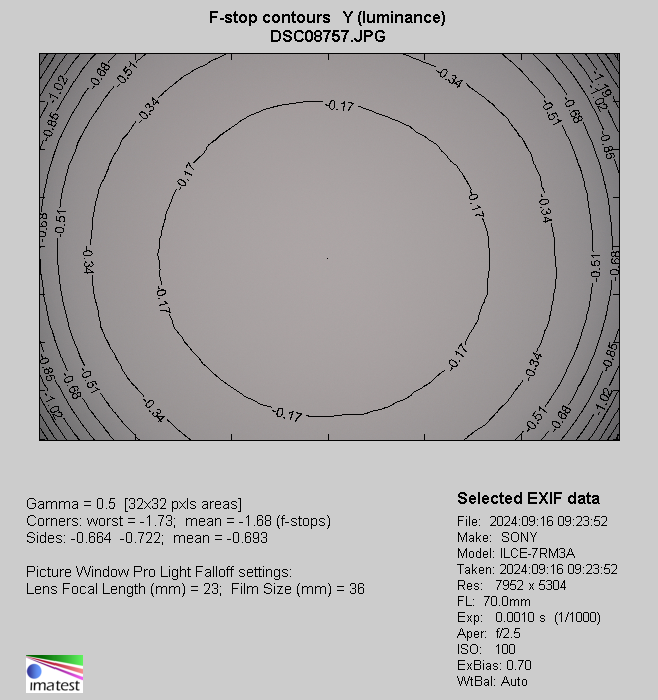 |
| Sony A7R IIIa, 105 mm, JPEG, f/2.8 |
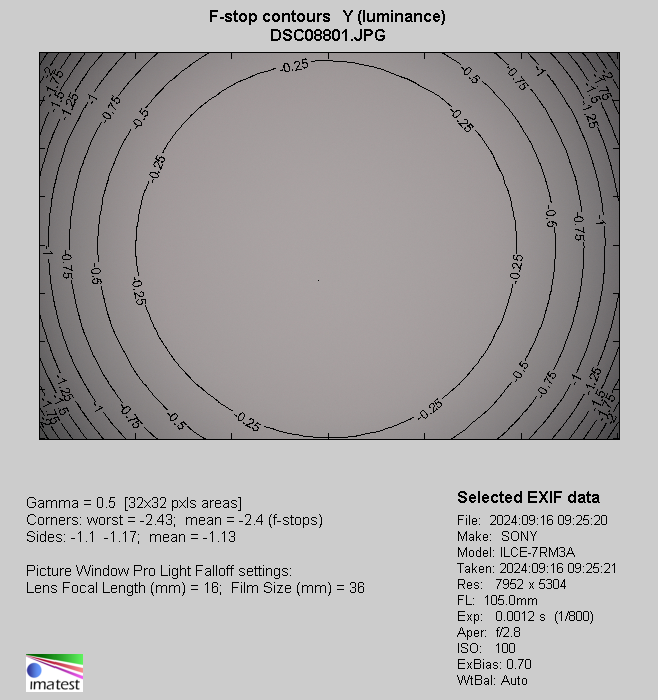 |
| Sony A7R IIIa, 150 mm, JPEG, f/2.8 |
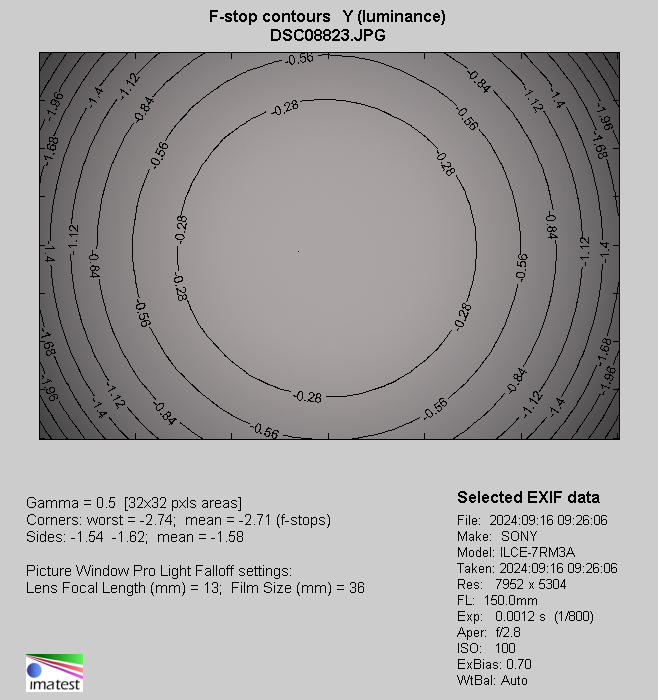 |




